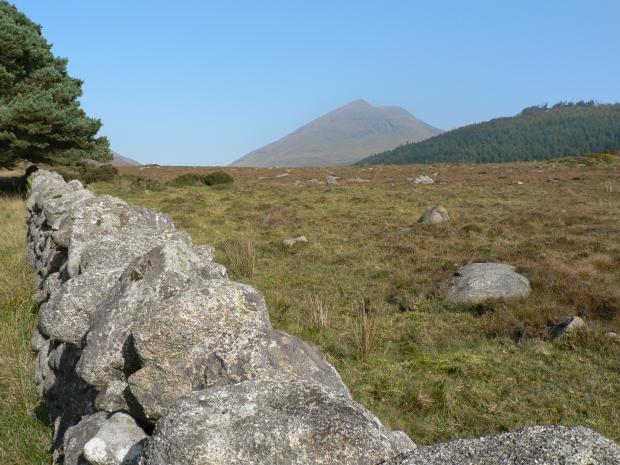
The Western Mournes and Kilfeaghan Upper are Palaeogene in age, approximately 56 million years old and formed during a period of crustal extension in the North Atlantic, related to ‘hot spot’ activity associated with the North Atlantic Igneous Province. The area is predominantly composed of the youngest two (G4 & G5) of the five granites that make up the Mourne Mountains and represent a later, separate igneous centre to the higher Eastern Mournes.
The granites were intruded at a high crustal level into Silurian age country rock as a sequence of distinct emplacement episodes. The heat from the granite intrusions metamorphosed the Silurian country rock to a hornfels. Colour banding defines two contrasting types; a dark bluish biotite-rich and a pale greenish diopside-rich hornfels.
Biological interest relates to the size, quality and diversity of the habitats within the area, in addition to the presence of particular plant and invertebrate species of note. Heathland is a scarce and scattered resource and the Western Mournes and Kilfeaghan Upper support one of the most extensive tracts in Northern Ireland. Blanket bog and grasslands are also represented producing a varied and diverse mosaic of habitats. The site includes the Cassy Water which rises in the centre, and runs down the southern flank to empty into Carlingford Lough. These habitats support an array of associated flora and fauna, including a number of rare plants and invertebrates.
A number of rare and notable plants have been recorded for the Western Mournes and Kilfeaghan Upper, including the notable Dwarf Willow Salix herbacea, Dark-leaved Willow S. myrsinifolia, Bog Orchid Hammarbya paludosa and Few-flowered sedge Carex pauciflora. An area of shallow pools on the western edge of the site contains a population of the scarce Keeled Skimmer dragonfly Orthetrum coerulescens. Both Wall Lasiommata megera and Green Hairstreak Callophrys rubi butterflies have also been recorded from the area.
The diversity of the Western Mournes and Kilfeaghan Upper means that many features contribute to the area's special appeal. Correct management is essential for special places like these. Traditional grazing practices together with the control of burning will ensure the survival of the rich range of plants and animals found on this site. Northern Ireland Environment Agency aims to work with landowners to ensure that special places like the Western Mournes and Kilfeaghan Upper are protected for the future.
Related articles
- ASSI Guidance for Public Bodies/Competent Authorities
- Coastal Areas of Special Scientific Interest
- Conservation Management Plans (CMPs)
- European Marine Sites - Marine Special Areas of Conservation and Special Protection Areas
- Introduction to Conservation Management Plans (CMPs) for Northern Ireland’s Special Areas of Conservation
- Marine Conservation Zones
- Marine Protected Areas
- Marine Ramsar sites
- Portrush Coastal Zone
- Special Areas of Conservation
- Special Areas of Conservation for Harbour porpoise
- Special Protection Areas
